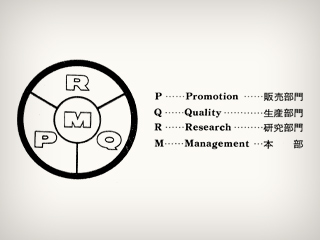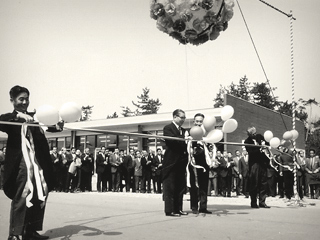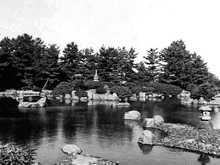With the 3-6 Plan successfully completed, Toyoji shifted the company's management structure away from top-down leadership to one with more departmental autonomy. Specifically, the company released a new management charter, the Eisai Management Code, in 1960. The Management Code contained The Spirit of Eisai, which forms the backbone of the company and its employees as a whole:
“Good research results in good products; good products in turn ensure good profits when well promoted. Good profits ensure good corporate growth, which in turn rewards employees with the means to earn a good living. A strong line of good, high-quality medicines promoted honestly and skillfully helps more people in more countries around the world enjoy better health and wellbeing. This is the Spirit that we at Eisai bring to our work.”
In 1962, an in-house logo was designed to visually represent this Spirit. The internal logo symbolized a management structure under which individual departments—“P” (promotion and sales), “Q” (quality and manufacturing), “R” (research), and “M” (management)—could function autonomously. Eisai also introduced a “Top P, Q, R, M” slogan to indicate that each department was welcoming in a significant period of change aimed not only at long-term, sustainable growth but at becoming top-tier leaders in the industry within their respective fields.















